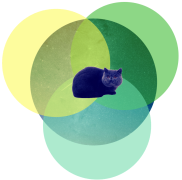In this blog in previous years, I’ve talked about how humans and cephalopods are oddly similar, explored the underwater realm of Sydney Harbour in great detail, and the invisible realm of microscopic creatures rendered by Ernest Haeckel. But in terms of delicate creatures, the Blaschkas were the 19th Century heavy-weights. I originally posted this post about 4 years ago but here it is, back by popular demand!
Bohemian glassmaker Leopold Blaschka began making drawings of animals the crew fished out of the sea on a maritime voyage to America in the 19th Century. This was a time of fervent exploration of the sea and land. People of the era were obsessed with accumulating specimens of exotic creatures. For Blaschka, the sea voyage began a lifelong obsession. Upon returning home, he turned away from the family tradition of making glass eyes, table lamps and jewelry. Instead Leopold Blaschka (1822-1895) co-opted his son Rudolph (1857-1939) into the business and together they began crafting ephemeral glass flowers and then later legendary marine invertebrates—jellyfish, squid, sea slugs—all painstakingly and faithfully rendered in glass.
In 1863, a curator for the natural history museum in Dresden, Professor Ludwig Reichenbach, saw an exhibition of highly detailed, realistic glass flowers created by a Bohemian lamp-worker named Leopold Blaschka.

Reichenbach was an avid enthusiast of marine animals and could see that this ephemeral workmanship could be just as easily applied to delicate sea creatures. He commissioned Leopold to make several glass anemones for his museum’s collection.
Leopold’s reputation quickly spread and he gained fame for his talent at creating invertebrate models for natural history collections world-wide. In 1876, Leopold’s son, Rudolf, joined his father in the family business.
The two master craftsmen and artists created thousands of intricately worked, carefully detailed glass models of invertebrates and botanical specimens. These were used as teaching aids and 3D exhibits in a time where the real specimens were scarce and rare to come across.
The intersection of art, science and craftsmanship
The invertebrate models, made mostly of clear glass, took their patterns and colors from paint, but for the later botanical models, the Blaschkas began making their own colored glass. The glass models were especially important for studying marine invertebrates; when preserved in spirits, the sea creatures swiftly lost their color and form. In building their specimens, the Blaschkas combined their own observations with those of published zoological accounts, and the models, intended as teaching tools, are full of naturalistic detail. Some show the same organism at different life stages, while others render key features larger than life.These models are exquisitely rendered and universally acknowledged as being perfectly true to nature. In a time before video and film, these models were the still-life documentaries of their time.
Harvard’s Glass Blaschka Flowers
Decades before Harvard commissioned them to create its famous Glass Flowers, Leopold and his son, Rudolf, became known for their invertebrate models, which were acquired by museums and universities across the world. Now a new permanent exhibit at the Harvard Museum of Natural History, Sea Creatures in Glass, showcases more than 50 examples of the Blaschkas’ earlier work, drawn from acollection of 430 models owned by the Museum of Comparative Zoology (MCZ).
Harvard’s collection of intricate Blaschka flowers:


2 thoughts on “Exquisite Marine Invertebrates of the 19th Century”